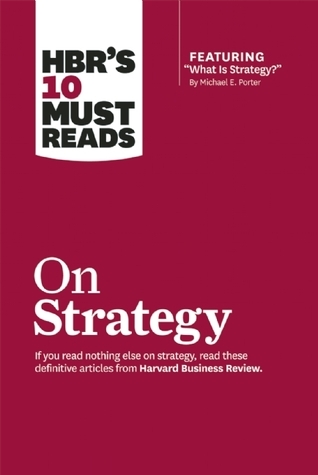More on this book
Community
Kindle Notes & Highlights
A company can outperform rivals only if it can establish a difference that it can preserve.
Strategic positioning attempts to achieve sustainable competitive advantage by preserving what is distinctive about a company. It means performing different activities from rivals, or performing similar activities in different ways.
THE JAPANESE TRIGGERED A GLOBAL revolution in operational effectiveness in the 1970s and 1980s, pioneering practices such as total quality management and continuous improvement. As a result, Japanese manufacturers enjoyed substantial cost and quality advantages for many years.
Strategy is the creation of a unique and valuable position, involving a different set of activities.
Strategy is making trade-offs in competing. The essence of strategy is choosing what not to do.
While operational effectiveness is about achieving excellence in individual activities, or functions, strategy is about combining activities.
First-order fit is simple consistency between each activity (function) and the overall strategy.
Second-order fit occurs when activities are reinforcing.
Third-order fit goes beyond activity reinforcement to what I call optimization of effort.
established
In 1996, 3M sold off several of its large mature businesses—a dramatic move that surprised the business press—to refocus on its enduring core purpose of solving unsolved problems innovatively.
A well-conceived vision consists of two major components: core ideology and envisioned future. (See the exhibit “Articulating a vision.”) Core ideology, the yin in our scheme, defines what we stand for and why we exist. Yin is unchanging and complements yang, the envisioned future. The envisioned future is what we aspire to become, to achieve, to create—something that will require significant change and progress to attain.
Similarly, 3M defines its purpose not in terms of adhesives and abrasives but as the perpetual quest to solve unsolved problems innovatively—a purpose that is always leading 3M into new fields.
3M: To solve unsolved problems innovatively
“Random Corporate Serial Killer”
How could we frame the purpose of this organization so that if you woke up tomorrow morning with enough money in the bank to retire, you would nevertheless keep working here?
A BHAG should not be a sure bet—it will have perhaps only a 50% to 70% probability of success—but the organization must believe that it can reach the goal anyway.
Apple’s true innovation was to make downloading digital music easy and convenient.
Fully 11 of the 27 companies born in the last quarter century that grew their way into the Fortune 500 in the past 10 years did so through business model innovation.
A business model, from our point of view, consists of four interlocking elements that, taken together, create and deliver value. The most important to get right, by far, is the first.
The key resources are assets such as the people, technology, products, facilities, equipment, channels, and brand required to deliver the value proposition to the targeted customer. The focus here is on the key elements that create value for the customer and the company, and the way those elements interact. (Every company also has generic resources that do not create competitive differentiation.)
decision rights, information, motivators, and structure.)
A brilliant strategy may put you on the competitive map. But only solid execution keeps you there.
Clarifying decision rights—for
Ensuring information flows where it’s needed—such
1. Everyone has a good idea of the decisions and actions for which he or she is responsible
2. Important information about the competitive environment gets to headquarters quickly
The first new process—translating the vision—helps managers build a consensus around the organization’s vision and strategy.
The second process—communicating and linking—lets managers communicate their strategy up and down the organization and link it to departmental and individual objectives.


